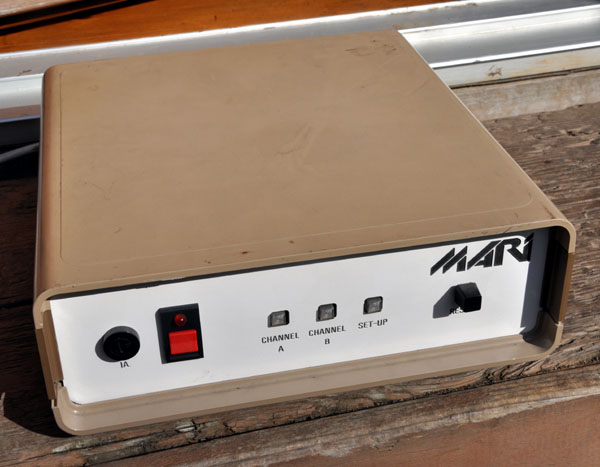
| Mus.Cat. NEWUC:2015.28 | Mnfctr: MARI Ltd | Date: 1984 | Ser. No: 0228 | Model: - |
| Comp: Microcomputer | Depth: 230mm | Width: 220mm | Height: 78mm | Weight: 2Kg |
Before 1992 the UK academic network JANET used X25 packet switching.
There were several protocols defining how to communicate over the network called the coloured
book protocols each identified by the colour of the cover of the specification document.
To explain the fawn box we have to explain something else - SSMP.
(The colour of the SSMP specification document was fawn.)
Simple Screen Management Protocol was a way of communication between a terminal
and a host machine. The user on the terminal would logon to the host machine to access their files
and applications on the host. If the terminal was an emulator on a microcomputer
eg BBC Micro, IBM PC, AMSTRAD 1512, or RM Nimbus that had SSMP support installed
the user could envoke a full screen editor of a text file. The display would be a
portion of the file about 20 lines, each line about 100 characters.
There was no mouse but cursor keys could move the cursor to somewhere in the text.
There you could delete or insert text. There was also CTRL-x commands to do global moves.
There was also a command to search for a piece of "text". And lots of other commands.
But in essence it was a WYSIWYG editor.What You See Is What You Get.
At last we come to the fawn box.
There was a lot of dumb terminals around, just a keyboard and screen.
Such as a DEC VT100, Hazeltine 1500,Televideo 9220, ...
The fawn box provided the processor power and firmware to enable the dumb terminal to use SSMP.
Unfortunately the price of personal computers dropped so fast that dumb terminals became old hat.